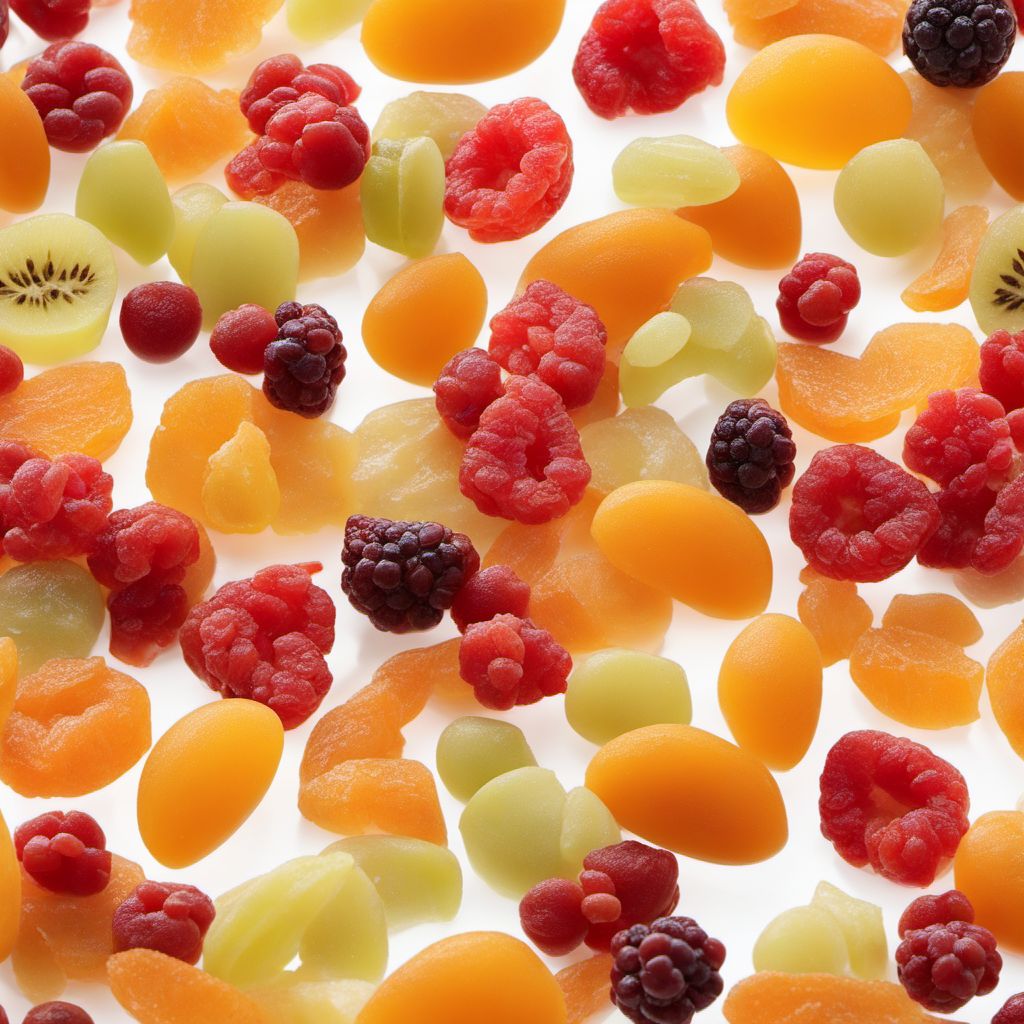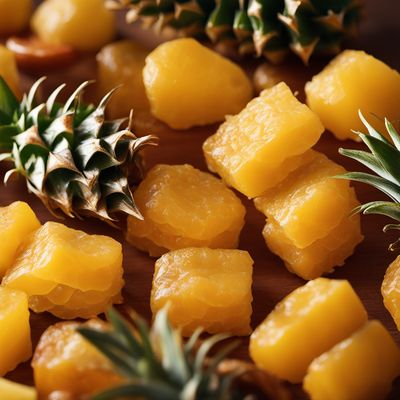
Ingredient
Candied fruit, mixed fruit
Sweet Delights: Exploring the World of Candied Mixed Fruit
Candied fruit is made by immersing fruit pieces in a sugar syrup, which preserves and enhances their natural flavors while giving them a chewy and slightly sticky texture. The fruit is then dried and coated in sugar, resulting in a glossy appearance. Candied fruit comes in a variety of vibrant colors and can be enjoyed as a standalone treat or used as a versatile ingredient in baking, confectionery, and desserts. Its sweet and fruity taste, combined with its chewy texture, adds a delightful contrast to a wide range of dishes.
Origins and history
The art of candying fruit dates back centuries and was initially developed as a method of preserving fruit for long periods. The technique is believed to have originated in the Middle East and was later adopted by European cultures. Candied fruit gained popularity during the Renaissance era, where it was used as a luxurious ingredient in elaborate desserts and confections. Today, candied fruit is enjoyed worldwide and is particularly prominent in traditional holiday treats such as fruitcakes and panettone.
Nutritional information
Candied fruit is a concentrated source of natural sugars and calories. While it retains some of the nutrients present in the original fruit, the sugar content is significantly increased during the candying process. It is important to consume candied fruit in moderation as part of a balanced diet.
Allergens
Candied fruit may contain sulfites, which can cause allergic reactions in some individuals. It is important to check the packaging for any allergen warnings before consuming.
How to select
When selecting candied fruit, look for pieces that are plump, moist, and evenly coated in sugar. Avoid any fruit that appears overly dry, discolored, or has a sticky or clumpy texture, as these may indicate poor quality or improper storage.
Storage recommendations
To maintain the freshness and quality of candied fruit, store it in an airtight container in a cool, dry place. Avoid exposing it to moisture or direct sunlight, as this can cause the sugar coating to become sticky or the fruit to spoil.
How to produce
Producing candied fruit at home requires immersing fruit pieces in a sugar syrup and then drying and coating them in sugar. While the process can be time-consuming, it can be a rewarding culinary project for those interested in experimenting with different fruits and flavors.
Preparation tips
Candied fruit can be enjoyed as a standalone treat or used in a variety of culinary creations. It is commonly used in fruitcakes, panettone, cookies, muffins, and other baked goods. When incorporating candied fruit into recipes, it is advisable to soak it in warm water for a few minutes to soften it before use. This helps prevent the fruit from becoming overly chewy or hard during baking.
Culinary uses
Candied fruit is a versatile ingredient that adds a burst of sweetness and vibrant colors to a wide range of dishes. It is commonly used in fruitcakes, panettone, stollen, and other traditional holiday treats. It can also be incorporated into cookies, muffins, bread pudding, ice cream, and even savory dishes like glazed ham or tagines for a touch of sweetness and visual appeal.
Availability
Candied fruit is commonly available in grocery stores, specialty food stores, and online retailers worldwide.
More ingredients from this category

Candied fruit, apple
The Sweet Delights of Apple Transformation

Candied fruit, cherry
Sweet Delights: Candied Cherries for Culinary Magic

Candied fruit, orange peel
Sweet Delights: The Captivating World of Candied Orange Peel

Candied fruit, pineapple
Tropical Delight: Exploring the Sweet and Tangy World of Candied Pineapple

Candied fruit, grape
Grape Bliss: Candied Fruit

Candied fruit, pear
The Sweet Transformation of Candied Pears

Candied fruit, bananas
Sweet Banana Delights